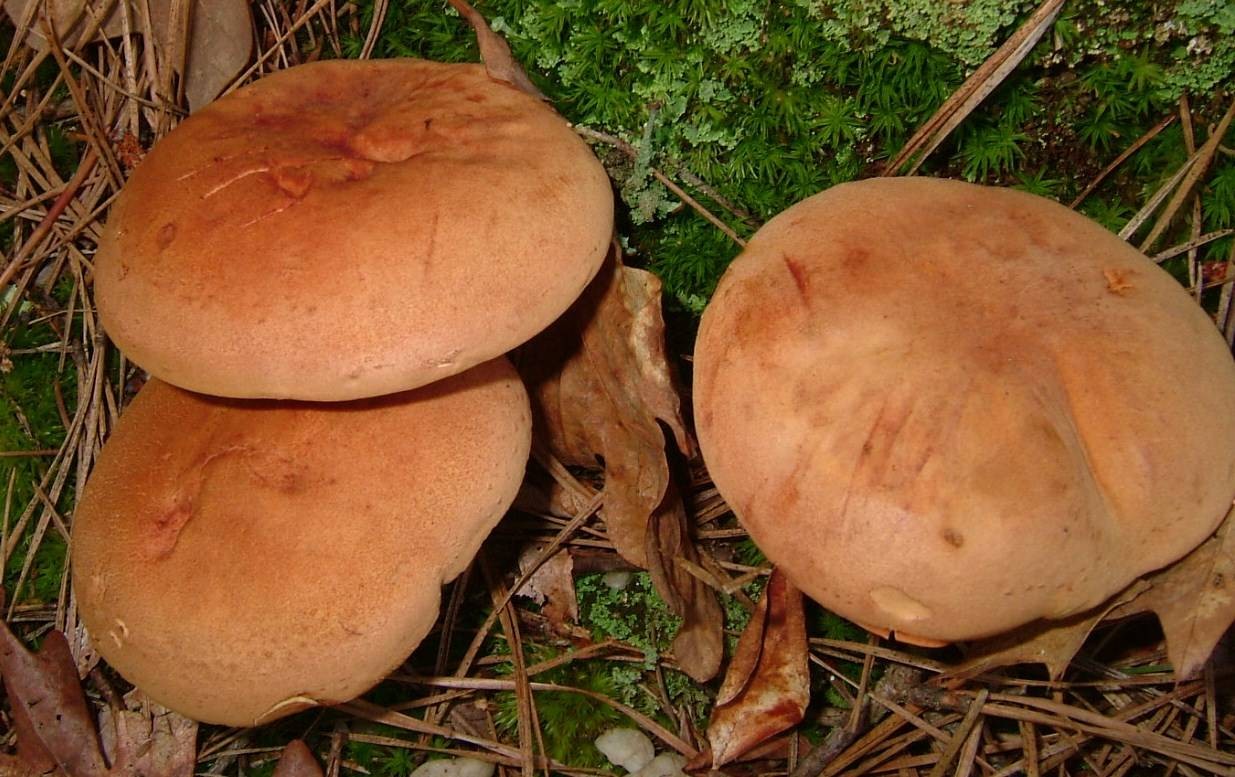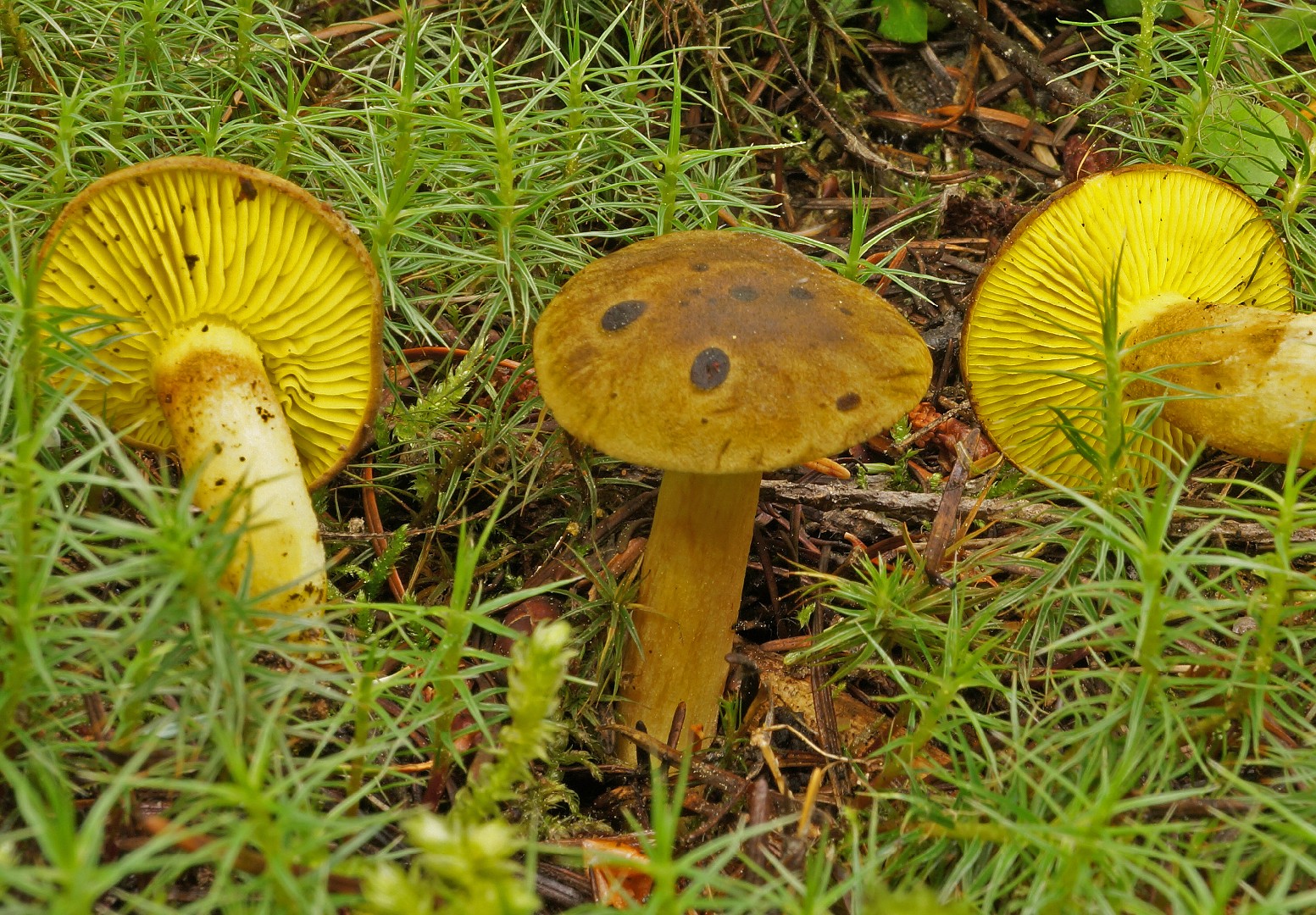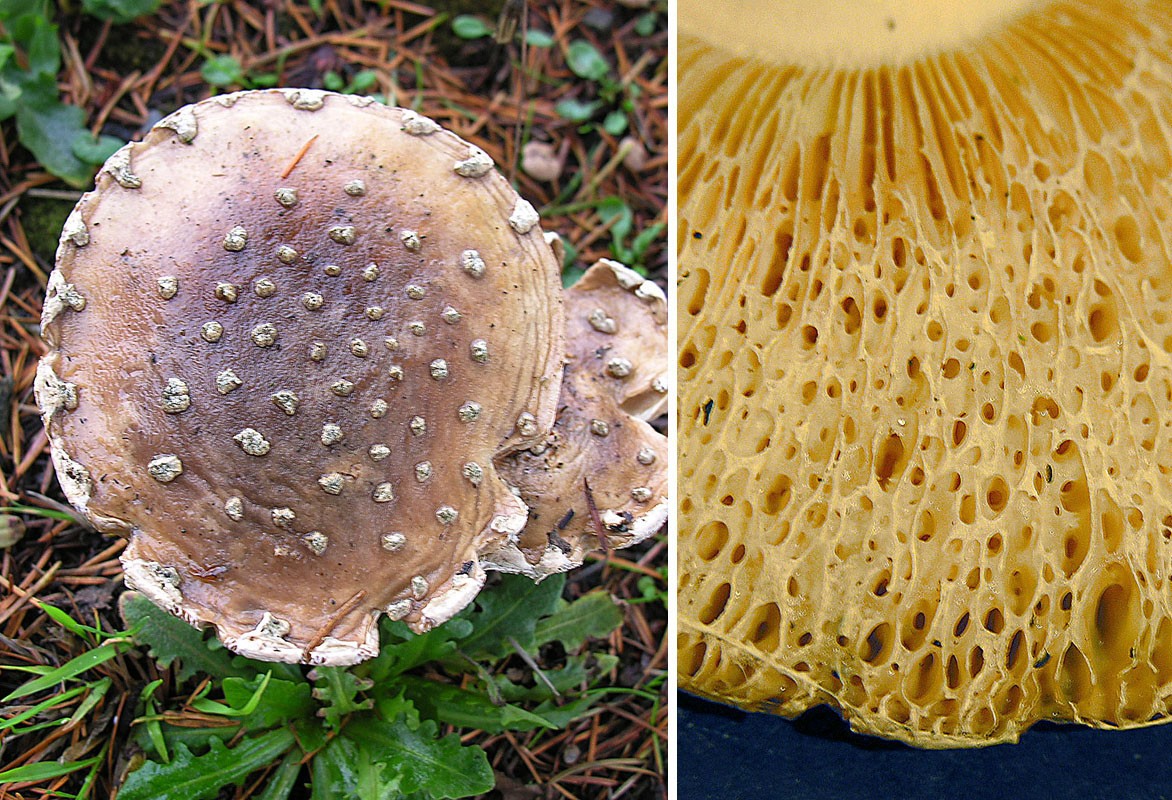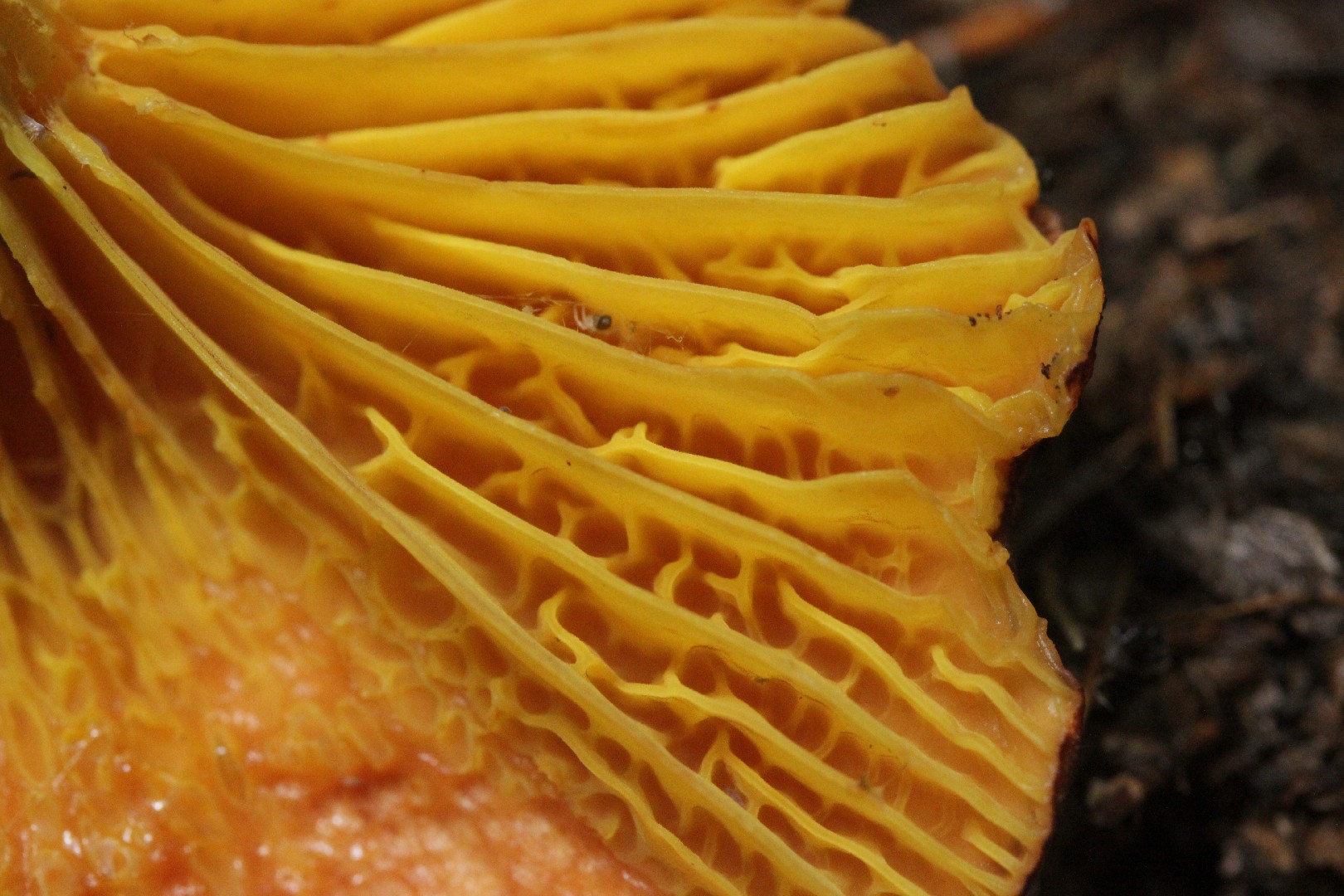Phylloporus
Scientific name: Phylloporus
Phylloporus
Scientific name: Phylloporus
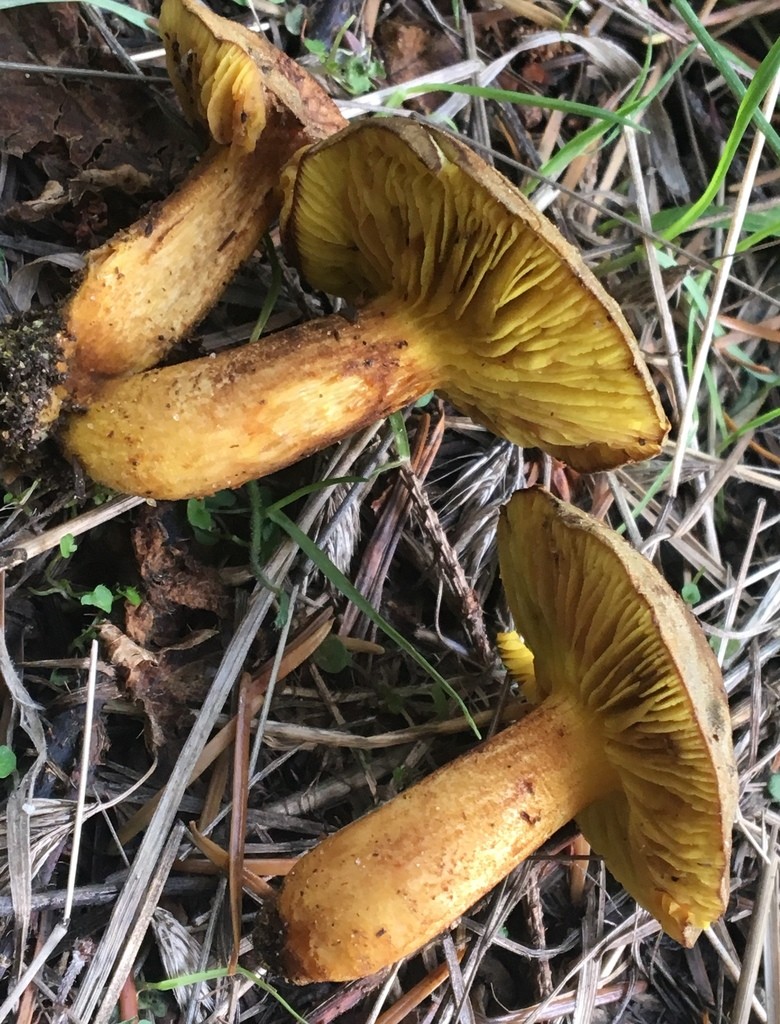 Photo By Liam O'Brien , used under CC-BY-4.0 /Cropped and compressed from original
Photo By Liam O'Brien , used under CC-BY-4.0 /Cropped and compressed from original Description
Phylloporus are an interesting group of fungi notable for their unique physical characteristic: they possess gills that appear more like pores under the cap, which can range in color from yellow to greenish. These fungi often grow in forests and are commonly found in symbiotic partnerships with trees, aiding in nutrient exchange. Some species within this group exhibit a blue staining when bruised or cut, creating a striking visual detail.
Species of Phylloporus
Scientific Classification
Phylum
Club fungi Class
Mushroom-forming fungi Order
Boletes and allies Family
Boletes Genus
Phylloporus 